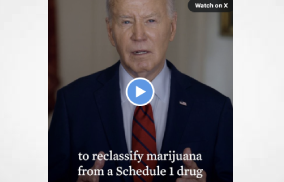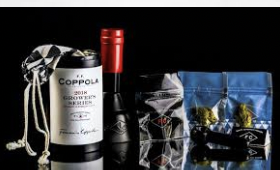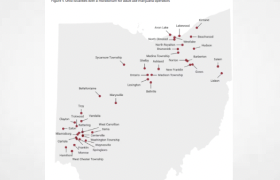The Pacific Daily News reports
Three tons. That’s how much Guam’s legal marijuana industry needs to produce in a year to match what is being sold illegally on island and undercut the illegal market, said William Parkinson, the public representative on the Cannabis Control Board.
“This is what I was able to crunch, with the data we have now,” Parkinson said during the board’s meeting last week. “This is to help us guide some of our decision-making and discussion.”
The board is drafting proposed rules and regulations for adult use marijuana, which became legal in April. It remains illegal to sell or trade marijuana for anything of value until the rules and regulations are implemented next year, but adults 21 and over currently can consume marijuana at home and grow a limited number of plants.
The board plans to review, and possibly approve, some of the rules and regulations during its meeting Dec. 3. The rules then will be adopted through the government’s administrative adjudication process, which requires a public hearing, review by the Department of Administration and approval by lawmakers.
The rules and regulations must be in place by next April, the law states.
Cannabis Control Board reaction
As Parkinson presented his findings to the board, the governor’s policy adviser, Adrian Cruz, interjected with a disclaimer, noting the board’s job is to create rules and regulations for the fledgling cannabis industry, not to set industry goals.
Rev and Tax Director Dafne Shimizu, who is a board member, also urged caution, noting an economic impact study, required by law, still must be conducted.
“I’m not an economist,” she said, adding it’s important to get experts to weigh in on the matter.
Board Chairwoman Vanessa Williams said Parkinson’s independent research will help the board as it prepares the rules for permitting and licensing, to ensure the promotion of a viable legal market that won’t be undercut by the illegal market.
Marijuana production estimates
Parkinson said the amount of marijuana that can be produced by licensed legal growers is easily determined, based on lighting and canopy space at the facility.
A 10,000 square-foot cultivation facility would require about 400 grow lights, he said, with about 60 percent of the lights used on flowering plants.
“Two to eight cultivators would match the black market product,” Parkinson said.
Recreational cannabis tax loophole
Parkinson also pointed out what he called a “giant loophole” in the way GovGuam plans to tax the recreational marijuana industry.
The law calls for a 15% excise tax, levied on the sale of cannabis by cultivators to retailers or manufacturers.
Parkinson said if the same business owns a cultivation facility and a retail store or manufacturing facility, it could sell marijuana to itself at an artificially low price in order to pay less in excise taxes.
“If we want this revenue from the excise tax, this is something we need to address,” he said.
The cannabis law allows the board to adopt a different tax amount or tax structure, if necessary.
Expensive at first
Parkinson said sales trends in other jurisdictions with legal marijuana indicate cannabis on Guam will be very expensive at first, as much as $24 per gram. The price likely will drop to about $8.25 per gram by the fourth year of sales, resulting in much less tax revenue.
“Our revenue, through the excise tax, will be absolutely wiped out,” he said.
The law requires 50% of the excise tax to be deposited to the “Cannabis Fund,” with the fund distributed to Public Health, the Guam Police Department, the Guam Customs and Quarantine Agency, Rev and Tax, the Department of Agriculture and the Guam Behavioral Health and Wellness Center.
The law also created a separate fund, called the “Cannabis Control Fund,” which will get the money collected from licensing fees, fines and other enforcement charges. The law states 60% of that money shall be appropriated to the Guam Behavioral Health and Wellness Center for substance abuse education, treatment and prevention. The rest of the money can be appropriated by lawmakers each year

















